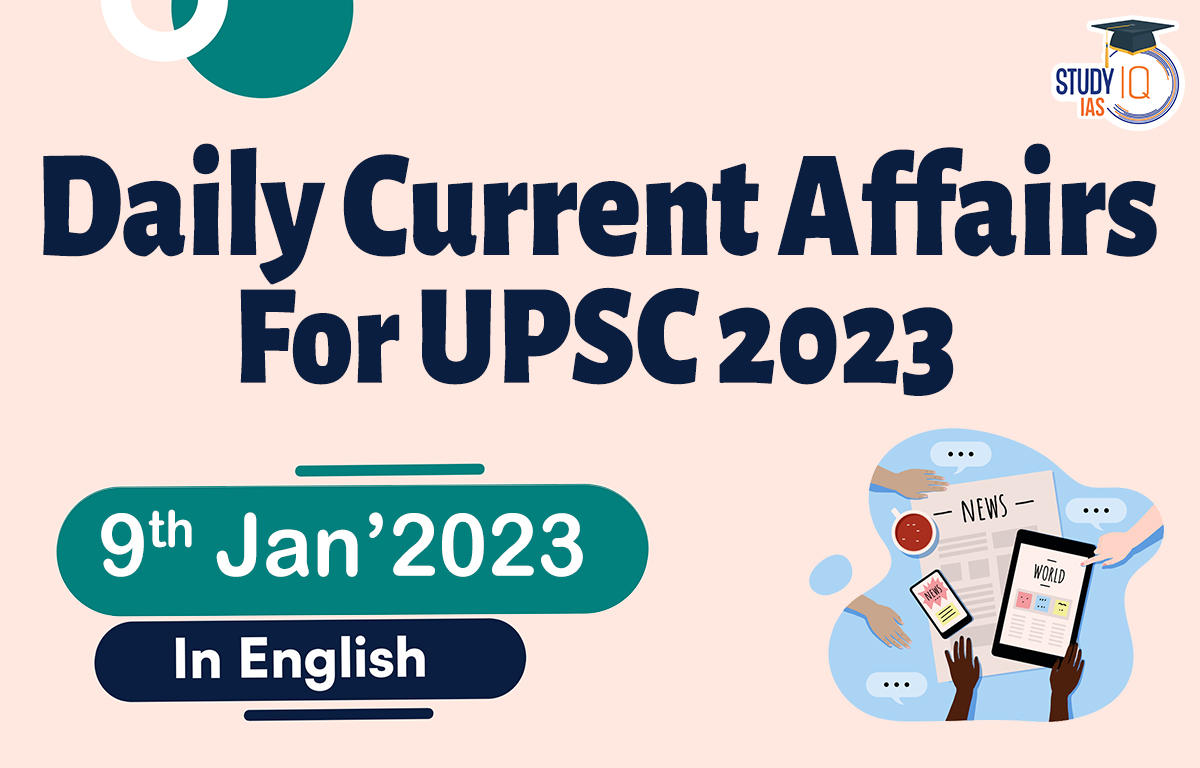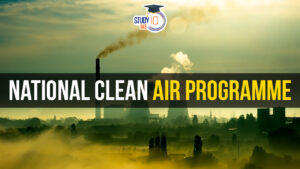Daily Current Affairs for UPSC 2023
Q) Which one of the following statements is not correct about the Article 19 of Indian Constitution?
- This right is available only to citizens of India.
- It is not protected against a private person.
- It can be restricted on the grounds of contempt of court.
- Article 19 guarantees the freedom of speech of minister.
Daily Current Affairs for UPSC – 7 January 2023
Explanation:
- Option (1) is correct: Article 19 is a part of the Fundamental Rights (Part III) of the Indian Constitution. Article 19 guarantees to all citizens the six rights. These are right to freedom of speech and expression, right to assemble peaceably and without arms, right to form associations or unions or co-operative societies, right to move freely throughout the territory of India, right to reside and settle in any part of the territory of India, right to practice any profession or to carry on any occupation, trade or business. It is available only to citizens and not to foreigners.
- Option (2) is incorrect: Supreme Court ruled that a fundamental right under Article 19 or 21 can be enforced even against private persons other than the State or its instrumentalities. By ruling that a citizen can seek enforcement of the fundamental rights to freedom of speech not just against the State, the court has effectively extended the ground for seeking these rights against other citizens. The SC also said that the right of free speech and expression guaranteed under Article 19(1)(a) cannot be curbed by any additional grounds other than those already laid down in Article 19(2).
- Option (3) is correct: Clause (2) of Article 19 of the Indian constitution imposes certain restrictions on free speech. These are security of the state, friendly relations with foreign States, public order, decency and morality, contempt of court, defamation, incitement to an offence, and sovereignty and integrity of India.
- Option (4) is correct: The Supreme Court has decided upon an important question on whether restrictions can be imposed on a public functionary’s right to freedom of speech and expression. The SC opined that a statement made by a Minister cannot be attributed vicariously to the government by invoking the principle of collective responsibility. Like other citizens, Ministers are guaranteed the right to freedom of expression under Article 19 governed by the reasonable restrictions laid out in Article 19(2).
Q) With reference to the ‘Sovereign Green Bonds’ (SGBs) in India, consider the following statements:
- They are eligible for trading in the secondary market.
- They can be considered eligible investments for Statutory Liquidity Ratio purposes.
- As per the Reserve Bank of India guidelines, only India residents are eligible to invest in these bonds.
Which of the statements given above is/are correct?
- 1 and 2 only
- 1 and 3 only
- 2 and 3 only
- 1, 2 and 3
Explanation:
- Option (1) correct: The Government of India made an announcement to issue Sovereign Green Bonds during the Union Budget 2022-23 to honour its commitment to significantly reduce the carbon intensity of the economy. Recently, the Reserve Bank of India (RBI) is set to issue Sovereign Green Bonds (SgrBs) worth Rs 16,000 crore in the current financial year. The auction of sovereign green bonds will take place in two tranches of Rs 8,000 crore each. The RBI will be selling two bonds maturing in five years and 10 years — worth Rs 4,000 crore each — at both auctions. Following are the framework with respect to the Sovereign Green Bonds’ (SGBs) in India:
- About 5% of the notified amount of sale will be reserved for retail investors and will be eligible for repurchase transactions (Repo).
- These bonds will be considered eligible investments for Statutory Liquidity Ratio (SLR) purposes.
- They will be eligible for trading in the secondary market.
- These sovereign green bonds will be designated as specified securities under the ‘Fully Accessible Route’ for investment in Government Securities by non-residents.
Q) Which of the following can cause land subsidence?
- Extensive groundwater withdrawal.
- Building heavy Infrastructures.
- Tectonic movements caused by natural forces of the Earth.
- Melting of ice sheets due to global warming.
Select the correct answer using the code given below:
- 1 and 2 only
- 1, 2 and 3 only
- 3 and 4 only
- 1, 2, 3 and 4
Explanation:
- Statements 1 and 2 are correct: Land subsidence is an environmental geological phenomenon which may cause significant damage and heavy economic losses. Ground water exploration and high-rise building construction are the main anthropogenic activities that induce notable land subsidence. All these human activities increase both the dynamic and static loading in soils which result in the compression of soil layers. Significant land subsidence is induced by the superimposition effect of groundwater withdrawal, soil self-weight, and upper loads. Massive exploration of groundwater leads to the decreasing of the water table as well as the ground elevation. Ground movement also occurs with the change of the stress state due to upper loads from buildings and foundations, which could lead to severe volumetric changes within the soil.
- Statement 3 is correct: Plate tectonics is associated with subsidence of many types and scales, particularly on or near plate boundaries. Plate tectonics is associated with the large-scale vertical motions that uplift entire mountain ranges, drop basins to lower elevations, and form elongate depressions in the Earth’s surface known as rifts that can be thousands of feet (km) deep. Plate tectonics also causes the broad flat coastal plains and passive margins to slowly subside relative to sea level, causing the sea to encroach slowly onto the continents. Subsidence in the East African rift system has formed a series of very deep elongate lakes, including Lakes Edward, Albert, Kivu, malawi, and Tanganyika.
- Statement 4 is correct: Ice sheets are heavy and weigh down the crust, while the ice-free areas just beyond the sheet bulge upwards as a consequence. When the ice melts, the crust beneath the former sheet rebounds, but the crust in the peripheral bulge subsides, making the land there dip and sea-level rise appear more extreme.
Q) Consider the following statements:
- Russia is the biggest supplier of natural gas to Europe.
- The compressed Liquified Natural Gas is constituted almost wholly of methane.
- Liquified Natural Gas emits nearly twice as much greenhouse gas as ordinary natural gas.
Which of the statements given above is/are correct?
- 1 and 2 only
- 1 and 3 only
- 2 and 3 only
- 1, 2 and 3
Explanation:
- Statement 1 is correct: About one-fifth of the European Union’s energy demand is met by natural gas, which makes gas the continent’s second largest source of energy. Russia is the biggest supplier of natural gas to Europe, which depends on the former for nearly 40% of its natural gas requirements.
- Statement 2 is correct: Liquified Natural Gas (LNG) is natural gas reduced to a liquid state (liquefaction) through intense cooling to around -161 degrees Celsius (-259 Fahrenheit). This liquid gas is 600 times smaller than the original volume and is half the weight of water. The compressed LNG, which is constituted almost wholly of methane, is a potent greenhouse gas.
- Statement 3 is correct: According to the US-based non-profit Natural Resources Defence Council, the Liquified Natural Gas emits about twice as much greenhouse gas as ordinary natural gas.
Q) Consider the following statements about New Umbrella Entity (NUE):
- NUE will also manage clearing and settlement systems.
- NUE will replace the payment platforms created by the National Payment Corporation of India.
- The maximum investment by any one promoter in the NUE’s capital is limited to 40%.
Which of the statements given above are correct?
- 1 and 2 only
- 1 and 3 only
- 2 and 3 only
- 1, 2 and 3
Explanation:
- Statement 1 is correct: New Umbrella Entity (NUE) is a non-profit entity (under the Companies Act 2013) that will manage and operate new payment systems, especially in the retail space such as ATMs, white-label PoS; Aadhaar-based payments and remittance services. It will also manage clearing and settlement systems that could be an alternative to the bank-promoted NPCI. Recently, the Reserve Bank of India (RBI) put on hold the licensing of the New Umbrella Entity (NUE) network.
- Statement 2 is incorrect: Any retail payments solutions created by the new umbrella entity or entities should interact and be interoperable with existing systems operated by the National Payments Corporation of India, the RBI said. That means the new entity will compete on developing new retail payments technology and not necessarily replace payments platforms operated by the National Payments Corporation of India.
- Statement 3 is correct: No single promoter is allowed to have more than 40% investment in the capital of the NUE, as per RBI guidelines. The promoter shareholding can be diluted to a minimum of 25% after five years of the commencement of business of the umbrella entity. The NUE would also have to maintain a minimum net-worth of Rs 300 crore at all times.


 National Clean Air Programme, Key Featur...
National Clean Air Programme, Key Featur...
 Current Affairs 25th April 2024 for UPSC...
Current Affairs 25th April 2024 for UPSC...
 Editorial of the day (25th Apr): UK's Rw...
Editorial of the day (25th Apr): UK's Rw...

















